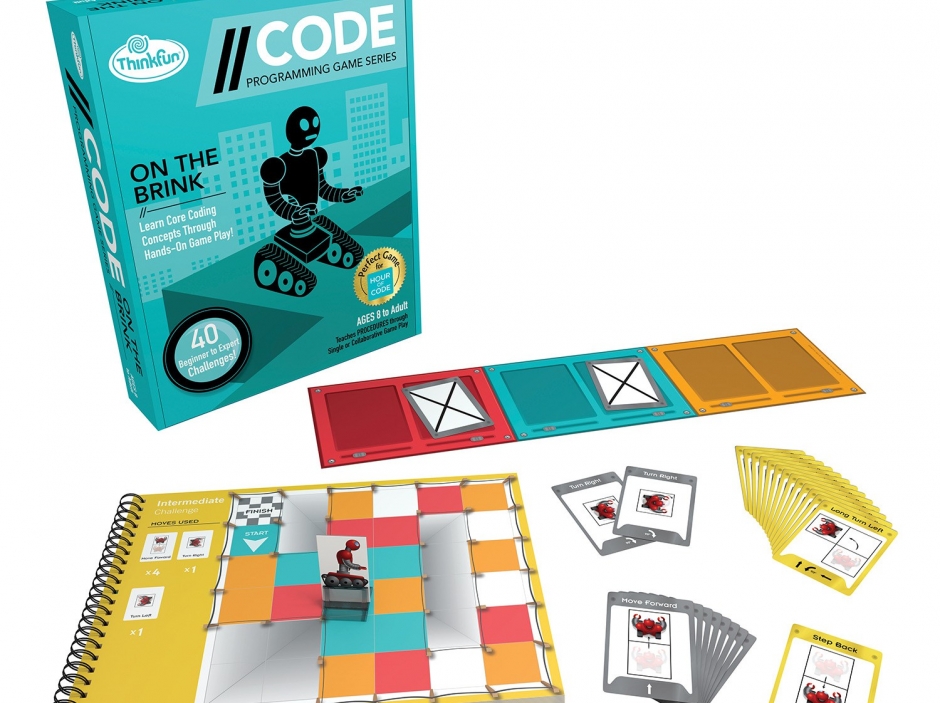In a year where every other electronic toy advertises that it teaches kids to code, it is heartening to know that one of the best approaches can be had for less than 15 dollars and doesn't require a battery or a smartphone. Think Fun has three "puzzle games", brain teasers that use coding techniques to reach the solutions.
My favorite of the three, reviewed here, is //CODE: On The Brink. In each mission, your little robot needs instructions to get from point A to point B on a colored maze. This would be easy if you had an unlimited number of cards. You could just program a stack of them like, "Forward", "Right", , "Forward" , "Left" to go in zig-zag. The problem is that you have to complete each "mission" with a very limited stack of cards.
In addition to a spiral bound book that has the mazes and serves as the "course" for your robot, you get a board that has, in the beginning, four spaces the same size as your cards: two are blue and two are red.
Programmers use "procedures" to create efficient code. They are routines that get called to do a particular function and can be set in most modern programming languages to fire-off when a certain event occurs. In this game the "event" is the robot landing on a colored square in the maze. Whenever this happens you have to do whatever is in the procedure boxes of that square's color.
For example, let's say your robot starts on a blue square. You would move it following the two instructions you've placed in the blue procedure boxes. Let's say you had a right turn and a left turn in the boxes. Guess what? Your robot would turn left and then right, but never get beyond the first square. You'll need some sort of forward movement card in one of those two boxes. Let's say you had a forward and a turn right. The robot would advance forward a square and then turn right.
When you've executed both steps in the procedure look to see what color square your robot has landed on. Then execute that color's procedure. Note, you never change the cards once the program starts running.
The fun here is to navigate complex maps with only two, and later, three procedures. The first few puzzles are easy, but by the time you've done six, your brain will have had quite a workout. These are fun to solve cooperatively with your child.
The missions get progressively more difficult, with techniques learned to solve one puzzle often being reinforced in later ones. Eventually, you get puzzles that three procedures (so six steps) and much harder problems to solve.
A tip: Since your robot can only make two moves at a time, it is often most important to think the puzzle backwards from where you see the robot is going to have to perform its first turn. Say to your child, "What will your robot have to do to get around the first turn?" For instance, "turn left, then go forward". Since you only have two steps you can assign per procedure, knowing the first turn almost always makes solving the other procedure easier. Once you have the first turn programmed then you only have to figure out what instructions you need to give in your other procedure to get there.
These puzzles are tricky, so don't be afraid to get involved with your child and turn the exercise into a cooperative game.
Some small quibbles, the computer concepts taught in the game should have been better explained in the documentation. The idea of what a procedure is and how procedures are used would have made this an even better set. Also, testers felt that the procedure board should have had arrows or some device to indicate the order of the steps within a procedure. This might have been done just by adding "Number 1" and "Number 2" labels on the boxes.
Beyond that , this set provides hours of missions to get your favorite aspiring astronaut's brain working, thinking creatively, and outside of the box.



